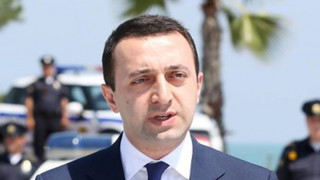On 2 April 2014, the Prime Minister, Irakli Gharibashvili, visited the region of Samegrelo and met with the local population. At the meeting the PM stated that since the Georgian Dream’s coming into power, 2,000 IDP families, or approximately 8,000 persons, have already been provided with living space and amenities and by 2016 the issue of accommodation would essentially be solved for IDPs. Gharibashvili also noted that the government is launching large-scale construction projects in Tbilisi, Kutaisi, Gori and Batumi with the aim of providing long-term accommodation for IDPs.
FactCheck inquired about the accuracy of the statement and verified the indicated facts.
The notion of an Internally Displaced Person (IDP) is defined by the Law of Georgia on Internally Displaced Persons. Pursuant to Paragraph 1 of Article 6, an Internally Displaced Person (IDP) of Georgia is a citizen of Georgia or a stateless person permanently residing in Georgia who was forced to leave his place of permanent residency and seek asylum within the territory of Georgia due to a threat against his life, health or freedom or against the life, health or freedom of his family members as a result of the aggression of a foreign state, internal conflict or mass violation of human rights. An IDP family is defined as a group of persons with or without the ties of relationship that hold the status of an IDP (a non-IDP can also be a member of the family), permanently reside in a separate residential space and collectively conduct household activities.
In line with the statistical data published on the website of the Ministry of Internally Displaced Persons from the Occupied Territories, Accommodation and Refugees of Georgia, a total of 246,606 Internally Displaced Persons and 82,707 families have been registered in Georgia following the inception of the process of mandatory registration.
The State Strategy on Internally Displaced Persons was published on 2 February 2007 according to Ordinance N47 of the Georgian Government. The document’s preamble envisages the goal of ensuring decent living conditions for IDPs and engaging them in the country’s civic life.
The State Strategy intends to solve the apartment issue (residence) and improve the social conditions of IDPs as well as implement necessary legislative initiatives with the overall aim of integrating IDPs into society.
In agreement with Ordinance N1162 of the Georgian Government, the Action Plan for the Implementation of the State Strategy on Internally Displaced Persons 2012-2014 was approved on 13 June 2012. The document enumerates the activities to be implemented for the provision of IDPs with long-term accommodation. The provision of this long-term accommodation implies the registering of a living area into their private property or the provision of an adequate amount of money or aid to beneficiaries. The registration activity can be implemented by state or local self-government bodies; international, donor or local organisations, physical entities or LEPLs (according to the Law of Georgia on Internally Displaced Persons).
According to the information provided by the Ministry of Internally Displaced Persons from the Occupied Territories, Accommodation and Refugees of Georgia, the following programmes have been implemented in pursuance of providing long-term accommodation for IDPs in the period from 2013 to present:
- Accommodation of IDPs in rehabilitated and newly-constructed buildings. A total of 13,041 IDP families across the country have submitted applications to the Ministry of Internally Displaced Persons from the Occupied Territories, Accommodation and Refugees of Georgia requesting residential space. Of this number, 1,353 IDP families have been accommodated in rehabilitated space in a long-term residential facility.
- Procurement of individual houses and apartments for IDP families. Beginning from 2013 the state launched the programme for purchasing houses in villages. Thirty houses have been purchased for IDP families as a part of this programme.
- Acquisition of properties which serve as residential areas for IDPs and handing them over to IDPs. Starting from 2013 the state began the acquisition of buildings that were in private ownership but accommodated IDPs. Five additional residential areas have been created as a part of this programme and in response to IDP appeals which will accommodate 202 families.
- Privatisation of living space for the long-term accommodation of IDPs. The government’s action plan enabled the passing into private ownership of living areas previously in temporary use for 949 families.








